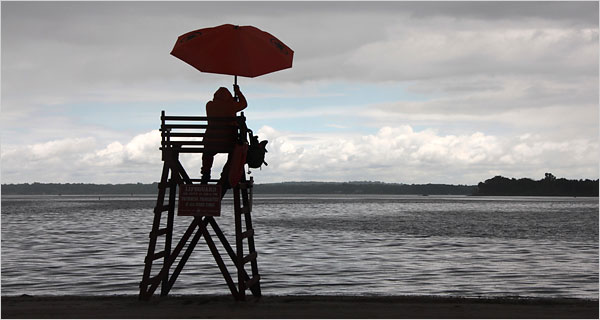
© Suzanne DeChillo/The New York TimesAnother rainy day at Orchard Beach in the Bronx. Attendance at city beaches through July 28 was down 30 percent, from 7.3 million to 5.1 million.
It's a gross, grungy, disgusting summer-in-the-city tradition: the muggy 90-degree day or, worse still, the 99-degree day.
But this summer has been conspicuously different in New York City. Not one 99-degree day in Central Park. Not a single day that the temperature even approached 90. For just the second time in 140 years of record keeping, the temperature failed to reach 90 in either June or July.
The daily average last month was at or below normal every day but two. The temperature broke 80 on 16 days in New York - one more day than in Fairbanks, Alaska. Depending on Friday's high, this was the second or third coolest June and July recorded in New York. If August follows the same pattern - and the latest forecast through midmonth predicts that it will - this could be the coolest summer on record.
The result: relief, lower electric bills, spared lives and undisturbed slumber.
But this being New York, New Yorkers have also recalibrated their threshold for heat complaints. This summer, 85 is the new 95.
